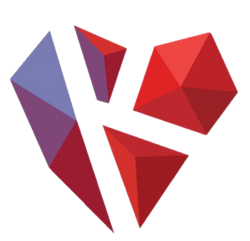
KAI
项目开始时间

2020年4月18日
关于
1. Background IntroductionKardiaChain is a decentralized blockchain platform focused on interoperability and scalability, designed to bridge isolated blockchain networks. It positions itself as a "dual-node" architecture that connects both EVM-compatible and non-EVM chains, targeting Southeast Asian markets with an emphasis on enterprise adoption. The project originated from Vietnam in 2018, aiming to solve blockchain fragmentation through its hybrid consensus mechanism.2. Website Core ContentThe website highlights four primary sections: Interchain Ecosystem (featuring cross-chain bridges), Developer Portal (with SDKs for dual-node integration), Enterprise Solutions (showcasing B2B use cases), and KAI Token Utilities. Interactive elements include a network status dashboard and a staking calculator. Notably, it emphasizes government partnerships in Vietnam and Thailand through dedicated case study pages.3. Technical FeaturesKardiaChain's hybrid architecture combines PBFT consensus with EVM compatibility, achieving 5,000+ TPS. Key innovations include: 1) Dual-node technology enabling simultaneous operation on multiple chains 2) Non-invasive interoperability protocol 3) AI-powered smart contract auditor. The testnet documentation reveals unique features like transaction bundling and adaptive block sizing, though mainnet implementation remains partial.4. Token EconomicsKAI token serves three functions: 1) Network fees (burn mechanism) 2) Governance voting (quadratic weighting) 3) Validator staking (15% APY). Total supply is capped at 5 billion, with current circulation at 38%. Allocation includes 25% ecosystem fund (vested), 20% team (4-year linear unlock), and 30% public sales. The economic model incorporates deflationary pressure through a 0.5% transaction tax redirected to staking rewards.5. Similar Competitor ComparisonCompared to Cosmos, KardiaChain offers lower latency (2s block time) but smaller validator set (50 nodes). Versus Polkadot, it provides EVM-native compatibility while laking shared security. The dual-node approach gives it an edge in connecting heterogeneous chains like Bitcoin and Ethereum, though adoption metrics trail behind established interoperability projects.6. Risks and ChallengesCritical risks include: 1) Concentrated validator governance (top 10 nodes control 65% stake) 2) Regulatory uncertainty in ASEAN markets 3) Competition from LayerZero's omnichain solutions. Technical debt is visible in delayed mainnet upgrades, while the treasury's heavy reliance on KAI token reserves raises sustainability concerns during bear markets.7. Industry FutureGrowth vectors focus on: 1) Institutional validators (targeting Southeast Asian banks) 2) CBDC interoperability sandbox 3) Gaming-focused sidechains. The roadmap hints at zk-Rollup integration for enterprise data privacy. Success hinges on capturing Vietnam's booming blockchain adoption, where government-backed digital transformation initiatives could drive network effects.8. SummaryKardiaChain presents a compelling interoperability solution for emerging markets, differentiated by: 1) Dual-node architecture reducing bridge risks 2) Regulatory-aligned approach 3) High-performance EVM environment. While currently overshadowed by larger interoperability players, its focus on Southeast Asian institutional adoption could yield asymmetric growth if execution matches technological ambition. 更多>


























 看多
看多
 看空
看空